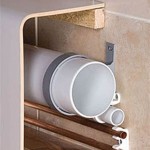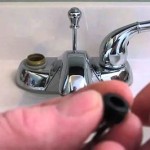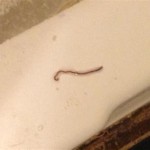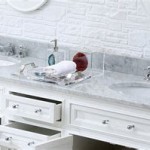Why Is There a Mildew Smell In My Bathroom Sinks?
A persistent mildew smell emanating from bathroom sinks indicates a moisture problem and subsequent fungal growth. This unpleasant odor is not merely an aesthetic issue but can also contribute to poorer indoor air quality and potentially exacerbate respiratory issues for sensitive individuals. Understanding the root causes of this problem allows for effective remediation and prevention.
One of the most common culprits is the presence of biofilm. Biofilm is a slimy, sticky substance comprised of bacteria, fungi, and other microorganisms. It thrives in damp, dark environments and readily forms in the drain pipes of sinks, particularly in areas with slow or stagnant water flow. The organic matter trapped within the biofilm provides a food source for mildew, leading to the characteristic musty odor.
Standing water in the P-trap, the curved section of pipe beneath the sink, can also contribute significantly to mildew growth. The P-trap’s design is intended to hold a small amount of water, creating a seal that prevents sewer gases from entering the bathroom. However, if this water becomes stagnant or contaminated with organic matter, it becomes a breeding ground for mildew.
Leakages, even minor ones, can introduce moisture into areas not readily visible, such as behind the sink or within the vanity cabinet. This hidden moisture creates an ideal environment for mildew to proliferate. Over time, the mildew colony expands, intensifying the odor and potentially causing damage to surrounding materials.
Insufficient ventilation in the bathroom exacerbates the mildew issue. Bathrooms are inherently humid spaces due to showering and handwashing. Without adequate ventilation, moisture lingers in the air and on surfaces, promoting mildew growth. Inadequate ventilation can also increase the moisture content within the drain pipes, further supporting biofilm and mildew development.
The presence of hair, soap scum, and toothpaste residue in the drain provides a rich food source for mildew. These organic materials accumulate over time, creating a hospitable environment for fungal growth. The combination of organic matter and moisture accelerates mildew development and intensifies the associated odor.
Infrequent cleaning of the sink drain can contribute to mildew smells. Regular cleaning helps remove the biofilm, organic matter, and mildew colonies, preventing the odor from developing. Neglecting drain cleaning allows these substances to accumulate, increasing the likelihood of a persistent mildew problem.
The materials used in the sink and drain construction can influence mildew growth. Porous materials, such as certain types of grout or sealant, can absorb moisture, creating a suitable habitat for mildew. These materials provide a larger surface area for mildew colonization compared to non-porous surfaces.
The presence of dirty or damp cloths and sponges stored near the sink can contribute to the mildew smell. These items retain moisture, providing a conducive environment for mildew growth. If these items are in close proximity to the sink, the mildew odor can easily permeate the surrounding area.
Overflowing garbage disposals, if present, can also contribute to mildew smells. Food particles trapped in the disposal unit can decompose, creating a breeding ground for bacteria and mildew. The combination of moisture and decaying organic matter intensifies the odor.
The age of the plumbing system can be a contributing factor. Older pipes may have accumulated debris and biofilm over time, making them more susceptible to mildew growth. Corrosion in older pipes can also create crevices and rough surfaces where mildew can easily take hold.
Identifying the specific source of the mildew smell is crucial for effective remediation. This may involve inspecting the P-trap, checking for leaks, and assessing the ventilation in the bathroom. Implementing appropriate cleaning practices, addressing leaks promptly, and improving ventilation are essential steps in eliminating the mildew smell and preventing its recurrence.
Regular maintenance plays a crucial role in preventing mildew smells in bathroom sinks. This includes routine cleaning of the sink drain with appropriate cleaning agents, ensuring adequate ventilation, and promptly addressing any leaks. Proper maintenance creates an environment that is less conducive to mildew growth, minimizing the risk of unpleasant odors and potential health concerns.

What To Do When The Bathroom Sink Smells Like Mildew Mold Smell

Moldy Smelling Water From Bathroom Faucet Hometalk

What To Do When The Bathroom Sink Smells Like Mildew Mold Smell

How To Prevent Find Get Rid Of Mold In Your Bathroom

Why Is There A Smell Under My Sink

Bathroom Smells Like Sewage Causes Fixes Inside Out
What The Heck In This Ugly Black Stuff My Wife Has Been Complaining About A Nasty Smell Coming From Her Bathroom Sink Since We Moved Into Our New House Two Years Ago

How To Clean A Stinky Sink Drain Home Repair Tutor

Why Is There A Stagnant Smell In The Bathroom

Why Your Bathroom Sink Drain Smells
Related Posts







